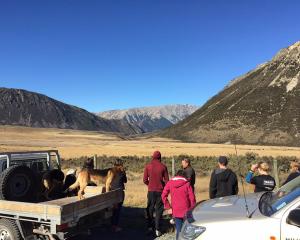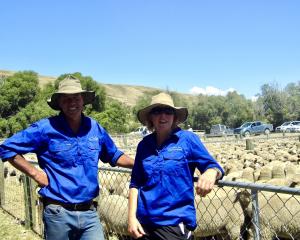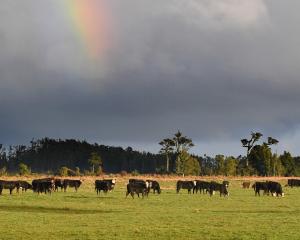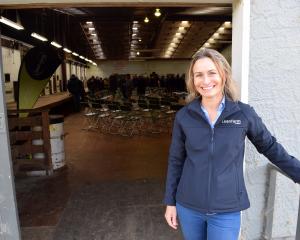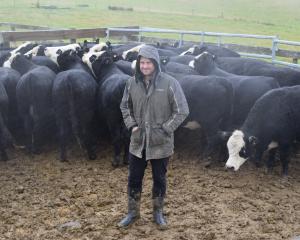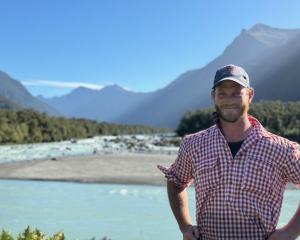
He has been with the organisation for 14 years and replaces Dan Coup, who is now chief executive of the QEII National Trust.
During his first week in the new role, Mr Moffat said he was conscious his knowledge of the industry and its people was a strength and he could provide continuity as he stepped up to lead the organisation.

Originally from South Otago, Mr Moffat was brought up on a farm south of Balclutha and completed an arts degree at the University of Otago.
He travelled overseas for a few years before returning for several brief stints in Government departments.
He worked for the Meat Board in Wellington and spent four years in Brussels as trade policy manager.
He returned to New Zealand in 2005 to join DINZ as venison marketing services manager. More recently, he has been manager of the deer industry's Primary Growth Partnership programme Passion2Profit.
Before joining DINZ, Mr Moffat had little to do with deer farming, although he was familiar with the sector and admired the way it had gone about things.
The industry pioneers had established mechanisms and structures such as Cervena and QA standards which were ahead of their time, he said.
The opportunity to work in an interesting, niche, high-quality sector and have connections with European customers appealed.
It was a small industry and he enjoyed constructive relationships with stakeholders. Deer farmers brought a lot of energy and enthusiasm.
"We know a lot of our people very well. We take responsibility for what we're doing," he said.
The industry had enjoyed a period of good returns and stability but "by no means are all the problems solved" and there were still plenty of challenges for marketing its products.
There was still work to be done to continue to expand markets for New Zealand venison so exporters had more choice about where to send it.
Velvet was enjoying a period of good, stable prices and production was growing reasonably solidly each year. The challenge was to ensure demand stayed ahead of production, he said.
On the farming side, there was a "great deal of uncertainty" around some implications of proposed policies being rolled out around water, greenhouse gases and biodiversity.
A great deal of pressure was being placed on users of land to respond to New Zealand society's expectations.
But New Zealand society was not necessarily the one that was going to be having to pay for the costs of some of those proposed changes, he said.
DINZ needed to be representing its sector's interests "pretty vigorously" and while he agreed some changes were required, they needed to ensure the good work being done by some many farmers throughout the country and "positive stuff" happening" was recognised.
It also needed ensured that any rules being introduced were practical and achieved the desired outcomes.
Mr Moffat was delighted to see the success of the Southland Environmental Advance Party in the recent Environment Southland community awards, where it had won the environmental action in water and land management category.
The Advance Party's initiative, which was part of the Passion2Profit programme, involved groups of motivated deer farmers working together in identifying opportunities to improve profits on their farms.
In Southland, the group was focused on recognising, understanding and reducing their environmental impact.
Each member of the group had their own project, such as water quality testing, creating sediment traps, fencing off critical source areas and planting out and creating wetlands.
They motivated each other and themselves to improve their environmental stewardship, Mr Moffat said.
When it came to putting his hand up for the chief executive's role, Mr Moffat said he enjoyed the sector and the people he worked with, and he also enjoyed new challenges.
While the country's food producing sector faced challenges, the deer industry had great products and it had shown the capacity to respond and adapt to changing circumstances.
"I'm excited about leading the talented team at DINZ as we help shape our industry's future," he said.
When it came to what he wanted to achieve, it was about ensuring the deer industry was well represented as it faced the various challenges and changing regulations, and what support it could provide to the rural sector.
The industry would be transitioning out of the Primary Growth Partnership-funded element of Passion2Profit over the next 12 to 18 months and it needed a very clear plan to be in place for what it would be doing post-PGP funding.
Thirdly, his aims were around continuing to evolve the industry's alignment of the premium position of New Zealand deer products in a world where markets were changing all the time.
DINZ chairman Ian Walker said the board had run an external recruitment process for the position, which attracted some very strong candidates from both inside and outside the deer farming industry.
"Innes' knowledge of the whole deer farming value chain, from the grass roots to the marketing of our premium products, is a huge asset to the industry, especially when paired with his skills as a manager," Mr Walker said.


